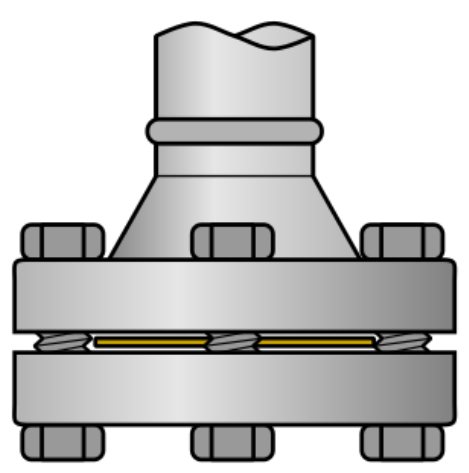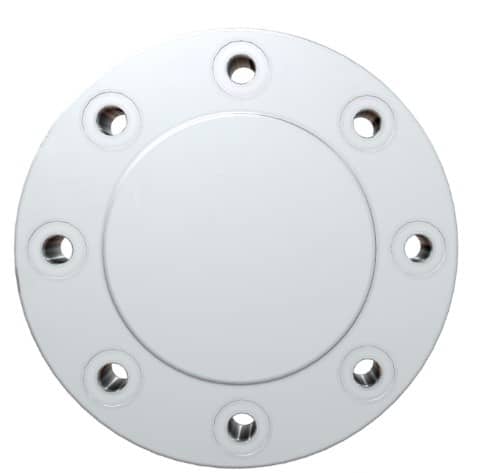What is a blind flange?
A blind flange (also called a ‘closure plate flange’) is installed at the end of a piping system to terminate a pipe. It has no centre hole (bore), so there is no flow through the flange. A blind flange may be used for isolating a pipe, valve, or pressure vessel. This type of flange is available in all sizes and classes, and may use a flat, raised, or ring-type joint face.

Blind Flange Terminating Pipe
A blind flange can replace a butt weld cap in case an extension of the piping line is required, or in case a piping inspection is required (remove the blind flange to access the pipe interior). This type of flange can also be used as the rod access point on drain systems. Depending upon the application, a blind flange may be drilled and used as a slip-on flange, or tapped and used as a threaded flange.
Despite its simplistic design, this type of flange is comparatively expensive.


Blind Flange
Non-Destructive Testing (NDT) Techniques
Blind flanges are not usually part of any routine non-destructive inspection (NDI) program. It is possible to measure the thickness of a blind flange as a precautionary measure, but this rarely occurs.
ASME Standards
The ASME B16.5 standard details the dimensions and tolerance requirements for blind flanges.
Are you enjoying this article so far? Then be sure to check out our Flange Fundamentals Video Course. The course has over five hours of video content, a 52 page colour illustrated handbook (this article is an extract from the handbook), a quiz, and you will receive a certificate of completion when you finish the course. Enjoy!
Flange Types, Faces, and Surfaces - Explained!
This video is part of our Piping Flange Fundamentals Video Course
Related Online Engineering Courses
Introduction to Steam, Boilers and Thermodynamics
Additional Resources
http://www.wermac.org/flanges/flanges_welding-neck_socket-weld_lap-joint_screwed_blind.html
http://www.sunnysteel.com/what-is-a-blind-flange.php
